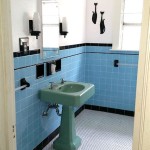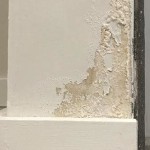Cost To Install A Bathroom Vent Through The Rooftop
Installing a bathroom vent is crucial for maintaining healthy air quality and preventing moisture damage. Venting through the rooftop is often the most effective method, allowing for direct and efficient expulsion of humid air. However, the cost associated with this installation can vary considerably depending on several factors. This article delves into the various elements that contribute to the overall cost of installing a bathroom vent through the rooftop, providing a comprehensive overview to help homeowners understand the potential expenses involved.
The primary purpose of a bathroom vent is to remove excess moisture generated during showers and baths. Without proper ventilation, this moisture can lead to mold and mildew growth, damage to paint and drywall, and even structural issues over time. Venting through the roof offers a direct and clear pathway for the humid air to escape, minimizing the risk of condensation within the attic or other enclosed spaces. Alternatives, such as venting through a sidewall, may be less effective due to potential obstructions or longer duct runs.
Before undertaking this project, it is important to assess the specific needs of the bathroom, consider local building codes, and understand the different components and labor involved. Careful planning and research can help ensure a successful installation and prevent costly mistakes down the line.
Factors Influencing the Cost of Installation
Several key elements influence the overall cost of installing a bathroom vent through the rooftop. These factors include the type of vent fan, the complexity of the ductwork, the roofing material, the labor costs, and any necessary permits or inspections. A thorough understanding of these factors is essential for budgeting accurately and avoiding unexpected expenses.
The type of vent fan selected significantly impacts the cost. Vent fans range from basic, builder-grade models to more advanced units with features like humidity sensors, timers, and integrated lighting. Higher-end models typically cost more upfront but may offer improved performance and energy efficiency. The CFM (cubic feet per minute) rating of the fan, which indicates its airflow capacity, is also a factor. A larger bathroom requires a fan with a higher CFM rating, which generally translates to a higher price.
The complexity of the ductwork also plays a crucial role in determining the cost. The longer and more convoluted the duct run, the more materials and labor will be required. Obstructions within the attic or walls may necessitate creative routing, adding to the complexity and expense. Flexible ductwork is generally less expensive and easier to install than rigid ductwork, but it may also be less efficient and more prone to trapping moisture. The ideal ductwork is as short and straight as possible, with minimal bends, to ensure optimal airflow.
The type of roofing material also affects the cost of installation. Different roofing materials require different techniques for sealing and flashing around the vent, which can impact labor time and material costs. For example, installing a vent on a shingle roof is generally less expensive than installing one on a tile or slate roof, which requires specialized tools and expertise. The age and condition of the roof are also considerations, as older or damaged roofs may require additional repairs before the vent can be installed.
Labor costs typically constitute a significant portion of the total project cost. Rates vary depending on the contractor's experience, location, and the complexity of the job. It is advisable to obtain multiple quotes from different contractors and carefully review their proposals to ensure they include all necessary tasks, such as cutting the hole in the roof, installing the ductwork, wiring the fan, and sealing the roof penetration. Be wary of unusually low bids, as they may indicate substandard workmanship or hidden fees.
Finally, permits and inspections can add to the overall cost. Most municipalities require a permit for any work that involves altering the roof structure or electrical wiring. The cost of a permit can vary depending on the location and the scope of the project. An inspection may also be required to ensure that the installation complies with local building codes. Failing to obtain the necessary permits and inspections can result in fines and delays.
Estimating the Cost of Materials
Accurately estimating the cost of materials is essential for creating a realistic budget. The materials required for installing a bathroom vent through the rooftop typically include the vent fan, ductwork, roof vent cap, flashing, sealant, electrical wiring, and any necessary mounting hardware. The cost of these materials can vary depending on the quality, brand, and quantity required.
The vent fan itself is a significant expense. As mentioned earlier, the price of a vent fan can range from inexpensive builder-grade models to high-end units with advanced features. A basic vent fan typically costs between $50 and $100, while a more advanced model with humidity sensors, timers, or integrated lighting can cost $200 or more. The CFM rating also influences the price, with higher CFM fans generally costing more.
Ductwork is another important material component. The type and length of ductwork required will depend on the distance between the vent fan and the roof vent cap, as well as any obstructions that need to be navigated. Flexible ductwork is generally less expensive than rigid ductwork, but it may also be less durable and efficient. A typical 4-inch diameter flexible duct can cost around $1 to $2 per foot, while rigid ductwork can cost $3 to $5 per foot. The cost of elbows, connectors, and other fittings should also be factored in.
The roof vent cap is a crucial component that protects the ductwork from the elements and prevents water from entering the attic. Roof vent caps are available in various materials, including plastic, aluminum, and steel. The cost of a roof vent cap can range from $20 to $50, depending on the material and design. It is important to select a vent cap that is compatible with the roofing material and provides adequate protection against rain, snow, and wind.
Flashing is used to seal the area around the roof vent cap and prevent water leaks. Flashing can be made from various materials, including aluminum, copper, and steel. The cost of flashing can vary depending on the material and the size of the vent opening. Sealant is also necessary to create a waterproof barrier between the flashing and the roofing material. A tube of roofing sealant typically costs around $5 to $10.
Electrical wiring is required to connect the vent fan to the power supply. The cost of electrical wiring will depend on the length of the wire required and the type of wire used. It is important to use the correct gauge of wire to ensure that the vent fan receives adequate power. Consult with a qualified electrician to determine the appropriate wiring specifications for the vent fan.
Finally, mounting hardware, such as screws, brackets, and straps, may be necessary to secure the vent fan and ductwork. The cost of mounting hardware is typically minimal, but it should be included in the overall budget.
Understanding Labor Costs and Permits
Labor costs and permits represent a significant portion of the overall expense when installing a bathroom vent through the rooftop. Obtaining accurate estimates for these costs is crucial for effective budget planning. These expenses can vary based on location, the complexity of the installation, and the specific requirements of local building codes.
Labor costs are primarily determined by the hourly rate of the contractor and the estimated time required to complete the job. The hourly rate of a contractor can vary depending on their experience, expertise, and location. In some areas, a licensed and experienced roofer or electrician may charge a higher hourly rate than a general handyman. The complexity of the installation also influences labor costs. A straightforward installation with easy access to the attic and roof will typically require less labor time than a more complex installation with obstructions or difficult roofing materials.
When obtaining quotes from contractors, it is important to ensure that the proposal includes all necessary tasks, such as cutting the hole in the roof, installing the ductwork, wiring the fan, and sealing the roof penetration. Some contractors may charge extra for certain tasks, such as removing old roofing materials or repairing damaged sheathing. It is also important to clarify whether the quote includes the cost of materials or if those are billed separately.
Obtaining the necessary permits is a crucial step in ensuring that the installation complies with local building codes. Most municipalities require a permit for any work that involves altering the roof structure or electrical wiring. The cost of a permit can vary depending on the location and the scope of the project. The permit application process may require submitting detailed plans and specifications for the installation.
Failure to obtain the necessary permits can result in fines and delays. In some cases, the municipality may require the homeowner to remove the unpermitted work and re-install it with the proper permits. It is advisable to check with the local building department to determine the permit requirements and obtain the necessary permits before starting the installation.
In addition to permits, an inspection may also be required to ensure that the installation complies with local building codes. The inspector will typically check the quality of the workmanship, the proper installation of the ductwork and wiring, and the sealing of the roof penetration. If the installation fails the inspection, the homeowner will be required to make the necessary corrections and schedule a re-inspection.
Engaging a qualified and licensed contractor can help ensure that the installation complies with all applicable codes and regulations. A contractor who is familiar with local building codes can guide the homeowner through the permit process and ensure that the installation meets all requirements.
By carefully considering labor costs and permit requirements, homeowners can create a more accurate budget for installing a bathroom vent through the rooftop and avoid unexpected expenses down the line. This careful planning ensures compliance and a successful installation.

Average Cost To Install A Bathroom Fan Forbes Home

2024 Cost To Install Bathroom Fan Angi

2024 Cost To Install Bathroom Exhaust Fan Replace Vent

Broan Nutone 3 In To 4 Roof Vent Kit For Round Duct Steel Black Rvk1a The Home Depot

How Much Does It Cost To Install A Bathroom Fan 2024 Bob Vila

2024 Cost To Install Bathroom Fan Angi

Cost To Install Plumbing Vent Pipe 2024 Data

2024 Cost To Replace Vent Pipe Boot

What Types Of Roof Vents Are There Active Ventilation S Inc

How To Use An In Line Exhaust Fan Vent Two Bathrooms Diy Family Handyman







